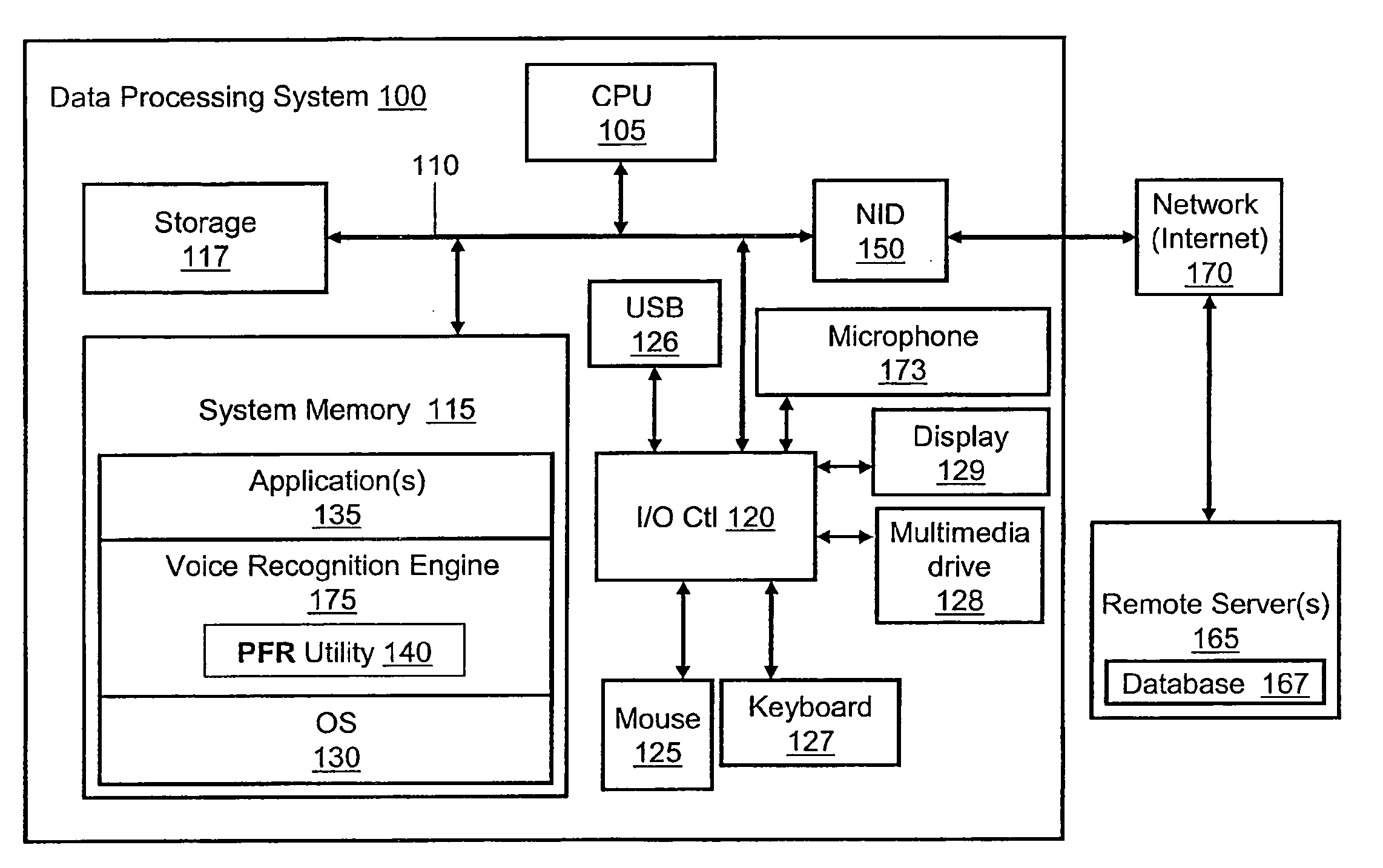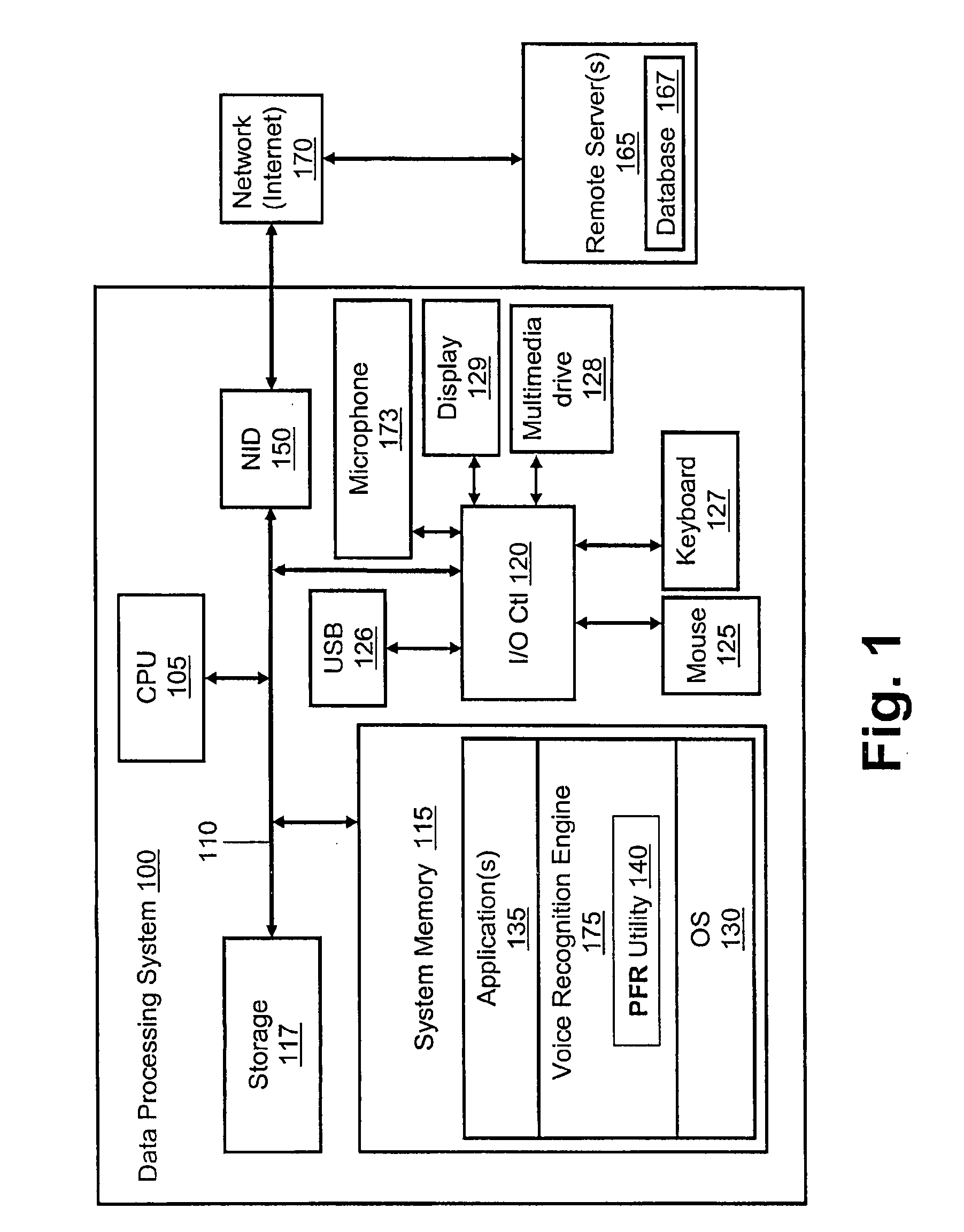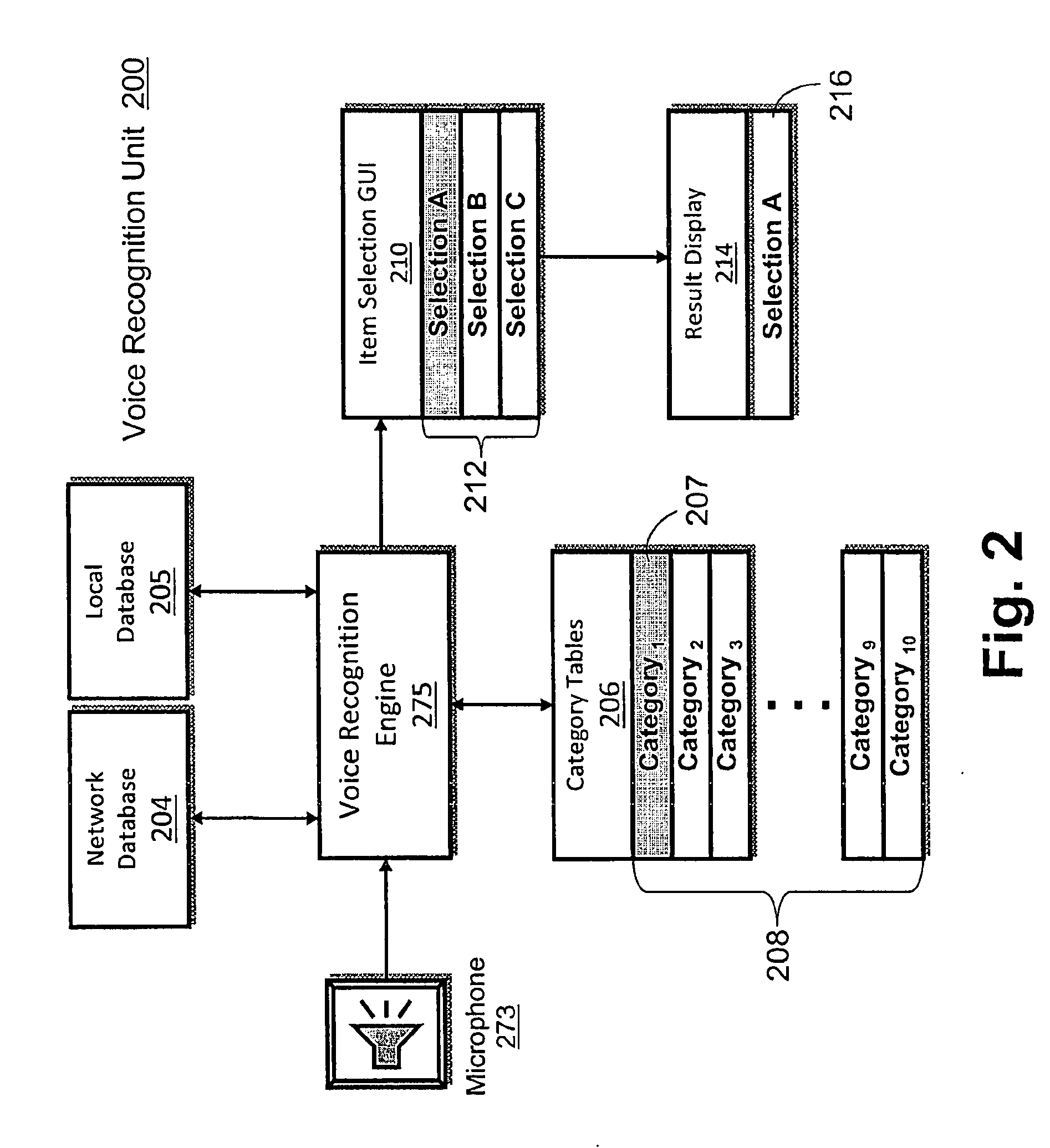Indexing method for quick search of voice recognition results
a voice recognition and indexing technology, applied in the field of computer systems, can solve the problems of inefficiency of text search, large number of text strings, and inability to efficiently search for a small database of files, and achieve the effect of reducing the amount of memory required
- Summary
- Abstract
- Description
- Claims
- Application Information
AI Technical Summary
Benefits of technology
Problems solved by technology
Method used
Image
Examples
Embodiment Construction
[0007]Disclosed are a method, a system and a computer program product for processing a spoken request to indexed results directly within a database. Current systems do not combine database indexing directly with the results of voice recognition. Complex voice recognition systems are phoneme based. Voice recognition systems require predefinition of the structure of what can be spoken that consists of text and its associating phonetic spelling. Voice recognition systems do not care what text is returned as the result (or result list) for what a user says. The text is used by an application for further processing. Instead of text, a database index can be directly associated with the phonemes corresponding to what the index points to. Thus, when a result or results are returned they can be directly indexed within a database. This approach reduces search time to a constant time as opposed to linear (n) search time and reduces memory required by the voice recognition system. Text strings ...
PUM
 Login to View More
Login to View More Abstract
Description
Claims
Application Information
 Login to View More
Login to View More - R&D
- Intellectual Property
- Life Sciences
- Materials
- Tech Scout
- Unparalleled Data Quality
- Higher Quality Content
- 60% Fewer Hallucinations
Browse by: Latest US Patents, China's latest patents, Technical Efficacy Thesaurus, Application Domain, Technology Topic, Popular Technical Reports.
© 2025 PatSnap. All rights reserved.Legal|Privacy policy|Modern Slavery Act Transparency Statement|Sitemap|About US| Contact US: help@patsnap.com



